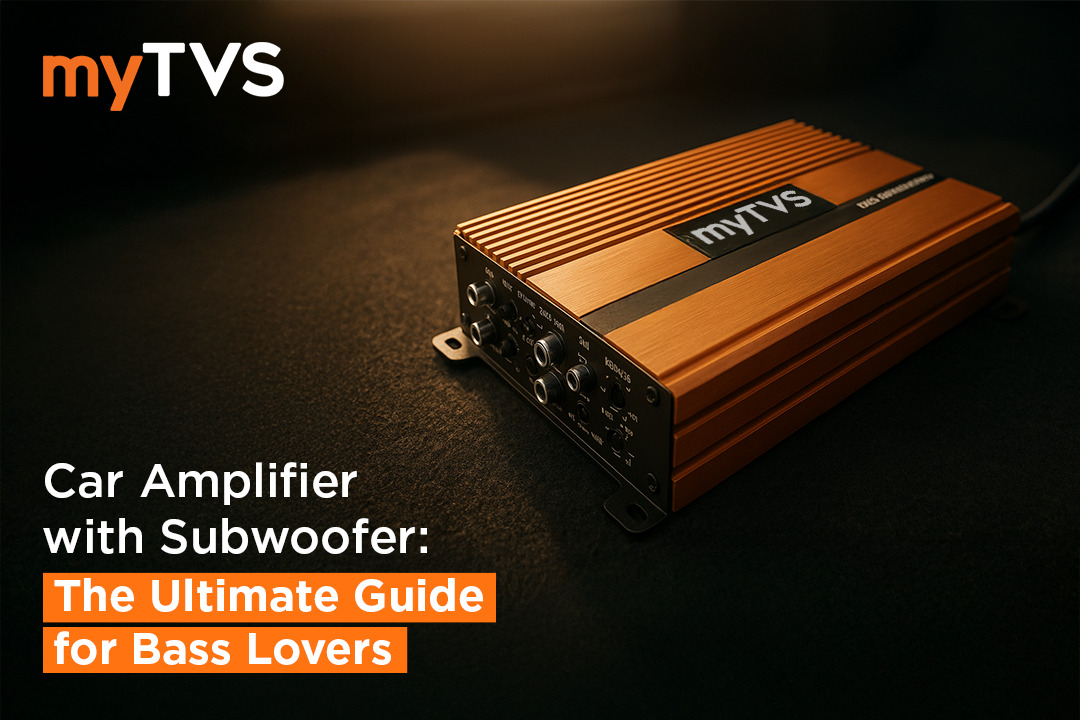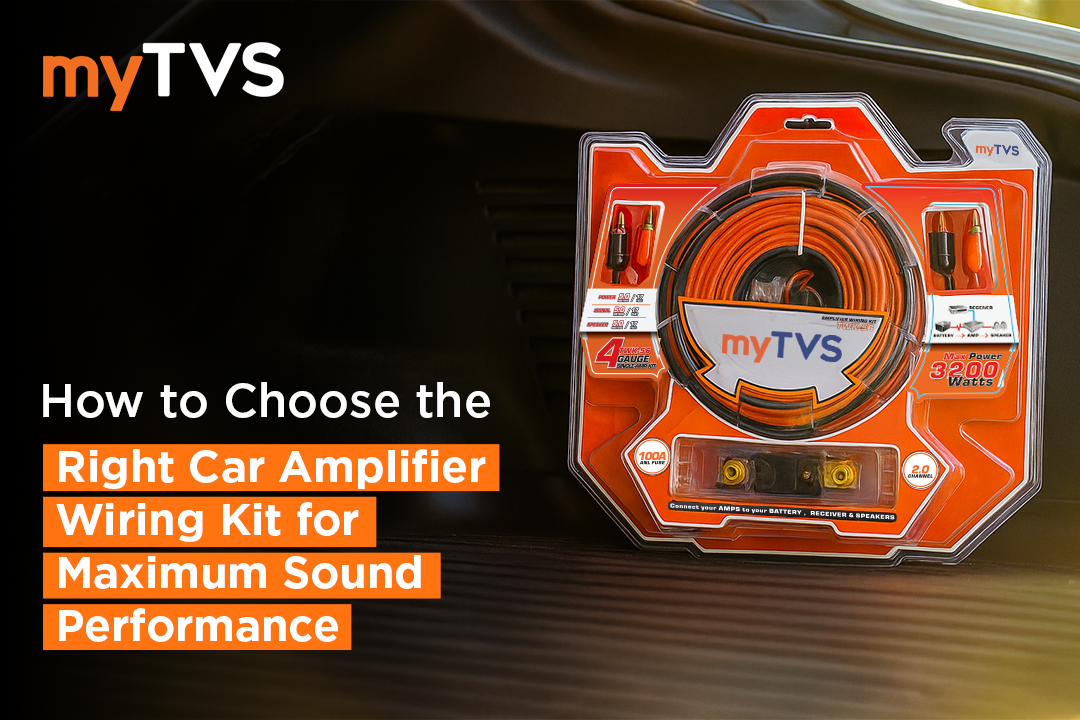If you want to significantly enhance your vehicle’s sound system, a car amplifier 4 channel is the perfect solution. This amplifier type is designed to power multiple speakers simultaneously, giving you crisp, clear audio with plenty of power and minimal distortion. Many factory car audio systems simply cannot deliver the volume and clarity that modern drivers expect, which is why upgrading with a car amplifier 4 channel can transform your in-car listening experience.
Whether you’re an audiophile or a casual listener, a 4 channel amplifier for car audio systems offers the ideal balance between power, flexibility, and convenience. It allows you to drive front and rear speakers and even add a subwoofer using bridging capabilities. In this guide, we’ll explore everything you need to know about the car amplifier 4 channel, from what it is, to how to choose the best one, and common installation tips to help you get the most out of your upgrade.
What is a 4 Channel Car Amplifier?
A car amplifier 4 channel is an electronic device that amplifies low-level audio signals and powers your car speakers with much higher wattage. Unlike mono or 2-channel amplifiers, which can power only one or two speakers, a car amplifier 4 channel features four independent output channels. This means it can supply power to four speakers separately or use bridging to power a subwoofer.
To understand its function better:
- A mono amplifier has one channel and is typically used to power subwoofers.
- A 2 channel amplifier powers two speakers and is often used for front or rear speaker sets.
- A car amplifier 4 channel can power four speakers at once, usually the front left and right and the rear left and right speakers, making it perfect for full vehicle sound upgrades.
The car amplifier 4 channel is particularly popular because it offers a balance between compact size and versatility, making it easier to install and providing better sound quality over factory amps or smaller aftermarket options.
Benefits of Using a 4 Channel Amplifier for Car Audio
Choosing a car amplifier 4 channel for your vehicle’s sound system offers several important benefits that significantly improve your listening experience:
- Power Multiple Speakers: Unlike single or dual channel amplifiers, a car amplifier 4 channel allows you to power four speakers simultaneously with independent channels. This results in better control and balance across all speakers.
- Bridging Capability for Subwoofers: Many car amplifier 4 channel units allow you to bridge two channels together to create a powerful mono output. This can drive a subwoofer alongside powering your front or rear speakers.
- Cleaner and Distortion-Free Sound: By amplifying signals more efficiently than factory amplifiers, a car amplifier 4 channel reduces distortion and unwanted noise, delivering clearer, richer audio.
- Greater Flexibility for Upgrades: A 4 channel amplifier for car makes future upgrades easier because you can add more speakers or a subwoofer without needing additional amps.
- Compact and Space-Saving: Most car amplifier 4 channel models are designed to be compact, making them easier to fit in tight spaces under seats or behind panels.
- Balanced Sound Distribution: Because each channel can be independently controlled, you get a more immersive and well-balanced sound stage throughout the vehicle.
Top Features to Consider Before Buying a Car Amplifier 4 Channel
Selecting the right car amplifier 4 channel involves paying close attention to several important features to ensure you get the best performance for your audio setup:
- Power Output (RMS vs Peak): The RMS (Root Mean Square) power rating is the continuous power the amp can deliver safely, which is what matters most for consistent sound quality. Peak power shows the maximum power output for short bursts. Look for an RMS rating that matches or slightly exceeds your speaker’s power handling to avoid damage or distortion.
- Impedance Compatibility: Speakers have impedance ratings (typically 2 or 4 ohms). Your car amplifier 4 channel must support the speaker impedance to function properly and avoid overheating or underperformance.
- Built-in Crossovers: Crossovers help filter frequencies, sending low frequencies to subwoofers and mid-to-high frequencies to speakers, which optimizes sound clarity and protects your equipment.
- Amplifier Class (Class A/B vs Class D):
- Class A/B amps deliver high-quality sound but are less efficient and generate more heat.
- Class D amps are more efficient and compact, suitable for limited space but sometimes have a slightly different sound character.
- Installation and Size: Consider the physical size of the amp and where you will install it. Some car amplifier 4 channel units are compact for tight spaces, while others may require more room and ventilation.
- Additional Features: Features like remote bass controls, protection circuits, and adjustable gain settings can improve user experience and system customization.
Choosing the best 4 channel amplifier for car depends on balancing these features with your budget and audio preferences.
Common Installation Mistakes & How to Avoid Them
Installing your car amplifier 4 channel correctly is crucial to avoid performance issues or damage. Here are common mistakes and tips on how to prevent them:
- Poor Grounding: A weak or faulty ground connection can cause amplifier noise, distortion, or even failure. Always use a short, solid ground wire connected to clean, bare metal on your vehicle chassis.
- Wrong Gauge Wiring: Using wires that are too thin for power or speaker connections can cause voltage drops or overheating. Use wiring gauges recommended by the amplifier manufacturer.
- Incorrect Bridging: Bridging the wrong channels or bridging without checking compatibility can damage the amplifier. Only bridge channels when the manual confirms support.
- Lack of Ventilation: Amplifiers generate heat during operation. Installing your car amplifier 4 channel in an enclosed space without airflow can cause overheating and shutdown.
- Poor Fuse Protection: Always install the proper fuse close to the battery to protect wiring and the amplifier from short circuits or power surges.
Following proper installation guidelines ensures your car amplifier 4 channel performs optimally and lasts longer.
Best Car Amplifier 4 Channel Models in the Market
Here are some of the most popular and well-regarded car amplifier 4 channel models that provide excellent performance for different budgets and preferences:
- Rockford Fosgate R600X4: Offers around 75 watts RMS per channel at 4 ohms, built-in crossovers, and a compact design suitable for most vehicles. Known for clean sound and reliability.
- JBL GX-A604: A Class A/B amplifier delivering 75 watts RMS per channel with thermal protection and easy installation, ideal for users seeking crisp audio quality.
- Alpine MRV-F300: Class D amplifier with efficient power delivery of 50 watts RMS per channel, lightweight and compact, suitable for limited spaces.
- Pioneer GM-D8704: Provides 100 watts RMS per channel, MOSFET power supply for cleaner sound, and bass boost functionality, perfect for those who want strong bass and volume.
When choosing a car amplifier 4 channel, consider your vehicle size, speaker power ratings, and personal audio preferences. If you shop with myTVS, you can find a wide range of options tailored for quality and seamless installation.
2 Channel vs 4 Channel: Which is Right for You?
Understanding the differences between a 2 channel and a car amplifier 4 channel helps you pick the best amp for your needs:
- 2 Channel Amplifier: Powers two speakers, often used for front or rear pairs. It’s usually more affordable and simpler to install but may require additional amps for full speaker coverage or subwoofer power.
- Car Amplifier 4 Channel: Powers four speakers at once—front and rear—offering more complete sound coverage. It also provides the flexibility to bridge channels for subwoofer use, making it a more versatile solution.
- Budget: 2 channel amps are generally less expensive upfront, but a car amplifier 4 channel provides more scalability for future audio upgrades.
- Sound Quality and Upgrade Potential: A 4 channel amplifier for car is more future-proof and can accommodate growing audio system complexity better.
For most full-system upgrades, a car amplifier 4 channel offers superior performance and convenience.
Conclusion
Upgrading your car’s sound system with a car amplifier 4 channel is one of the most effective ways to enjoy powerful, balanced, and distortion-free audio while driving. It provides the flexibility to power multiple speakers, bridge channels for subwoofers, and future-proof your setup for any audio upgrades. Whether you’re an audiophile or simply want better sound quality, the right 4 channel amplifier for car will transform your driving soundtrack.
Upgrade with Confidence – Choose myTVS
Ready to take your car audio to the next level? A premium car amplifier 4 channel can turn your vehicle into a mobile concert hall with unmatched sound clarity and power. Explore the latest models and expert installation services at myTVS — trusted by thousands for quality, performance, and reliability.
Shop now and experience the difference a car amplifier 4 channel can make in your drive.
Frequently Asked Questions (FAQs)
Q1. Can a car amplifier 4 channel power a subwoofer?
Yes. Many car amplifier 4 channel models allow bridging two channels to power a subwoofer, while the other two channels power speakers.
Q2. Is it difficult to install a 4 channel amplifier for car audio systems?
Installation requires some technical knowledge and proper tools, but it’s manageable. For best results, professional installation is recommended.
Q3. Will a car amplifier 4 channel work with factory head units?
Most factory systems can connect to a car amplifier 4 channel using RCA outputs or speaker-level inputs with adapters.
Q4. What’s the difference between RMS and peak power in amplifiers?
RMS refers to continuous power the amp can handle safely; peak power is the maximum burst power for short durations.
Q5. Does amplifier class affect the sound quality?
Yes. Class A/B amps generally provide warmer, high-fidelity sound; Class D amps are more efficient but may have a slightly different audio character.
Q6. How do I match speaker impedance with a car amplifier 4 channel?
Match your speaker’s ohm rating (typically 2 or 4 ohms) with the amplifier’s supported impedance to ensure optimal performance.
Q7. Can I install multiple amplifiers in my vehicle?
Yes, but a car amplifier 4 channel often replaces the need for multiple amps by powering front, rear, and subwoofer speakers with bridging.
Q8. How can I prevent my amplifier from overheating?
Proper ventilation, correct wiring, and avoiding enclosed spaces help keep your car amplifier 4 channel cool during use.











